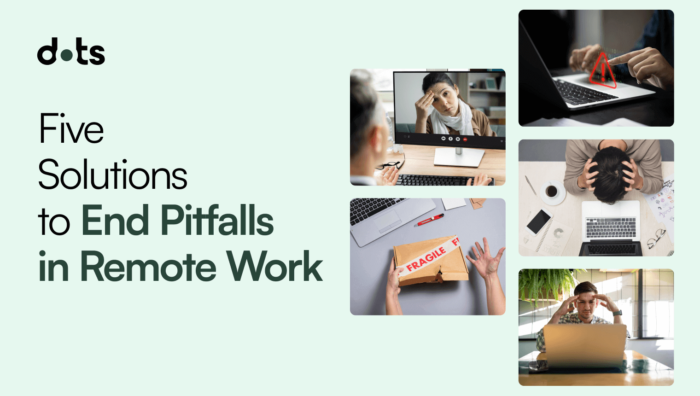Global prices are set to rise. That’s what the experts say, and as we watch the US firing off new tariffs left, right, and center, potentially destabilizing the dollar and the world economy, it’s hard not to worry. The 90-day pause announced yesterday (with the exception of China, whose tariff will skyrocket to 125%!) is but proof of the instability of these decisions, but it provides some temporary relief. In any case, expect more red tape than ever when trying to ship gear across borders. That’s potentially bad news for scaling global companies.
Tariffs that might seem like political tools are changing how companies handle everyday tasks, especially when it comes to getting the right tech into employees’ hands.
So, whether you’re onboarding a new hire in Toronto or replacing a broken laptop for someone in London, tariffs are making global IT logistics more challenging.
Here’s what’s happening, why it matters for IT asset management, and how you can keep your systems running smoothly, even when global trade is unpredictable.
Tariffs Are Driving Up Costs and Slowing Things Down
Tariffs are more than taxes; they shake up how goods move across borders. When a government increases tariffs on goods, like IT hardware, it means more cost for importers, longer processing times, and often a domino effect of counter-tariffs from other countries.
According to a report by PC World, renewed U.S. tariffs are having ripple effects across the electronics and manufacturing industries, impacting pricing and availability for IT equipment. Tech gear like laptops, monitors, and networking devices are among the first categories affected.
This hits IT teams hardest. Everything from onboarding new employees to maintaining systems relies on fast, reliable hardware delivery.
However, it’s not all doom and gloom. According to a report from Wired, Trump exempted semiconductors from tariffs, meaning the prices of IT hardware may not rise as much as many think and will not be hit as hard as other industries. Beyond this, having a solid IT procurement plan and making use of IT logistics platforms can help soften the blow.
Managing Global IT Asset Management Just Got More Complicated
It’s not just hardware costs that are affected. Tariffs mess with multiple parts of the IT asset lifecycle. That includes:
Procurement Delays and Price Swings
Buying devices used to be simple: find the best deal, place an order, and wait for delivery. But when tariffs pop up, that “best deal” might not be so great anymore. Prices vary weekly; if you’re ordering from international vendors, it can be challenging to predict final costs.
If you’re responsible for IT procurement, this means more guesswork, approvals, and longer lead times.
Shipping and Customs Challenges
Even if you order the right gear, getting it where it needs to go can be another story. International shipping is slower and more expensive, especially for businesses supporting remote onboarding in multiple countries.
It’s no surprise that many IT managers are increasingly frustrated by unpredictable customs delays tied to shifting trade policies. Some shipments are held for days or weeks in certain regions.
This shipment delay can lead to serious onboarding problems when new employees are left waiting for laptops or accessories. The delays cost time, morale, and productivity.
The Hidden Risk: Inconsistent Compliance and Data Handling
Offboarding and data security don’t stop because late shipments or costs increase. You must still wipe devices, track who has what, and comply with your policies. But when hardware is spread across countries, stuck in warehouses, or delayed in transit, keeping that level of visibility gets harder.
This isn’t just a logistics issue—it’s a compliance and security concern. Devices with sensitive data could be sitting in unknown locations while IT teams scramble to manage everything manually, opening up risks that no company wants to face.
How Do You Protect Your IT Asset Management Strategy?
You can’t control tariffs. But you can control how well you prepare for them. The key is building resilience into your IT operations. Make them flexible, automated, and ready to handle global complexity.
That means:
- Re-evaluating procurement sources regularly to keep up with changing tariffs and duties. Use platforms or processes that compare global vendors in real time.
- Stock key equipment in advance, especially for onboarding. To reduce last-minute panic, consider maintaining small local inventories in your major hiring markets.
- Managing international shipping through trusted logistics networks or partners who specialize in IT gear.
- Automating offboarding and device recovery workflows to ensure secure data handling and compliance, no matter where employees are located.
- Centralize your IT asset tracking so you always know where every device is, what has been wiped, and what is still in use.
Conclusion
Tariffs aren’t just a political move but also an operational hurdle for IT and operations teams. They raise prices, delay shipments, and make IT asset management feel like navigating a maze with no map. However, the companies that thrive through these changes will be the ones that adapt.
By future-proofing your IT logistics and investing in more intelligent systems, you’ll avoid the scramble next time a surprise tariff lands. You’ll onboard faster, stay compliant, and support your people wherever they are.
If you’re looking for a more innovative way to manage this, Dots offers a one-stop-shop solution that handles global procurement, onboarding, offboarding, and logistics all in one place. It’s designed to work across borders, sync with your existing HR tools, and simplify IT asset management, even when the world does the opposite.
Ready to see it in action? Book a free demo and discover how much easier your day-to-day could be. You can’t predict the next trade war, but with the right tools, you won’t have to.





